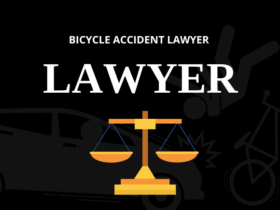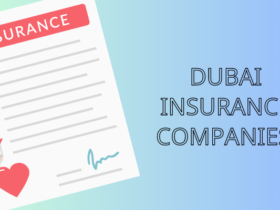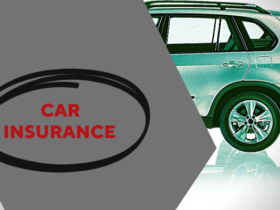Introduction Of Which Has More Cash Value In Multiple Insurance Policies? Guaranteed Rate of 2%
Which Has More Cash Value In Multiple Insurance Policies? Guaranteed Rate of 2%. Funded for 10 years to maximize my internal rate of the return stop letting that policy keep cooking and then start a new one I have to go through new expenses but will the internal rate of return exceed the new expenses that I have to take on every time.
That guaranteed rate of four per cent applied to all life insurance
But we’re going to look at the old products that had a guaranteed rate of four per cent why we are showing this is if you have a policy already in force that has a guaranteed rate of four per cent this will apply to you also guaranteed rates of four per cent existed since the 1980s right since 1980 with a lot of Which Has More Cash Value In Multiple Insurance Policies? Guaranteed Rate of 2%. Funded for 10 years to maximize my internal rate of the return stop letting .
That’s a long time to have a guaranteed rate of four per cent with that guaranteed rate of four per cent applied to all life insurance products that would work that would result in a similar mech limit with all life insurance products my point to mentioning this is what you will find unlike the last video is if I go with one policy and just keep feeding the beast and I don’t have to go through new expenses.
That will produce greater results whereas with the new products, not the case anymore so this will be good to go through just if you’ve ever heard hey it makes sense to keep on feeding an existing policy and not go through new expenses with new policies that had been the answer for about 40 years with all things being equal. You Can Also Read How Much Money Can I Add to my Insurance Policy.
So we’re going to go through it and provide some details similar to what we did in the last video so we’re going to keep all things the same still apples to apples concerning company product design we’ve got the whole life 100 and the 10 pay actually with the old products it’s not called whole life it’s called a legacy which is a whole life product but that’s just one way to identify.
The highest internal rate of return
If it’s the old product or the new product but the same thing when we look at the funding here legacy let’s call it 100 product one policy where I can pay into it up until the age of 100 I only have to go through the initial expenses once and I can keep feeding that policy for as long as I’d like whereas a 10 pay policy I will still see the highest internal rate of return with that option.
But I can only pay into it for a maximum of 10 years after that I have to stop even if I want to continue to pay I no longer can but that’s the or I should say the advantage is the internal rate of return the 10-year funding option that is a disadvantage to some people prefer that and then here’s a big disadvantage new policy results in new expenses new break-even point new start-up costs.
So the question is this with a 10-pay policy the fact that it has a higher internal rate of return will that higher internal rate of return exceed the new expenses that I have to go through every 10 years compared to a policy where I can just keep feeding it beyond 10 years and I’m well beyond the initial expenses so let’s take a look similar to what we looked at in our last video just to touch on this everything will look very similar.
Death benefits to get the same mech limit of 100k
You’ll see a little bit different death benefits because we have a guaranteed rate of four per cent so I need more death benefits to get the same mech limit of 100k with the old 10 pay product it was about 3000 right off the bat of the base premium but very very similar again same company same fundamentals or same principles just different products with some adjustments.
So let’s take a look here have some fun beginning with the legacy 100 product this was one of my favourite products with mass for a long time and the reason why is it was a fantastic option if I wanted to pay into a policy for five years or if I wanted to continue to pay for 15 years or 50 years we could design it almost like a swiss army knife where I could decide.
I think I want to fund for five years but then I fall in love with the policy I want to keep on pumping money into it whether it’s 100 grand 10 grand whatever my financial situation allows but I can continue to pump it pump money into it or stop early I do not need to decide upfront and you’ll find that the short-term IRR long-term irr was very very attractive you’re going to see that.
The term insurance rider cheap way or cost-effective
The legacy 100 and legacy 10 pay are very similar a lot of times people will look at this option and say hey that gives me strong performance and the ability to adjust as I go like I don’t have to commit myself to 10 years or less with the legacy 100 whereas a 10 pay I do versus now with the new products it’s a bit of a different ball game where there’s a clear winner.
If you haven’t watched our last video I’d recommend that the limited pay products do give more value but to get back on track so I don’t talk too much I know I do that a lot where is the money going with policy design there’s your base premium 10 000 mass mutual allows us to go as aggressive as 1090 split there’s the term insurance rider cheap way or cost-effective way to raise the death benefit
Which mainly raises the mech limit to where we want it that five thousand dollars is not the cost of the term rider about a thousand dollars is allocated toward term a little bit more the rest goes toward puas that is a blended pua rider and then everything else is into the basic paid up additions writer so 100k per year in right off the bat between 87 and 88 of my total payment in first year cash value.
A policy designed for strong long-term performance
Whole life 100 product it was 84 000 right off the bat higher pua fees exist on newer products compared to the old products for the most part as a result of those higher pua fees what was the break-even just about year six between years six and seven technically here it’s year five and this is a policy designed for strong long-term performance.
We pump money into it for 30 years then we stop thereafter there’s your mech limit reduced paid up year 31. we can continue to pump money into this we stopped at 8.65 a lot of people relate age 65 to a standard retirement age I’ve got my thoughts on that but that’s why we did that so there’s our legacy 100 let’s take a look at the 10 pay policy option a was.
What or the 10 pay policy phase a or phase one was funding it 10 000 per year for 10 years or 100k per year for 10 years phase 2 at age 45 I start a new policy at the same 100k per year so we’ve got three separate policies here’s the first one 10 pay policy legacy 10 pay 10 000 base premium there we go there’s scheduled ailer their pure pua rider and with their 10 pay product.
Which is level for the first 10 years about 2600 dollars
We’ve got the renewable term rider which is level for the first 10 years about 2600 dollars with mass mutual’s 10 pay policy both the old and the new you could not attain a 1090 split with their lister rider which provides flexibility so today if someone’s interested in the 10 pay question I ask multiple times is are you comfortable without having that.
That ultimate flexibility with mass mutual to bounce payments up and down each year without any medical underwriting if we don’t have lister attached we run into that issue regardless of if it’s an old legacy product or a new one so a renewable term rider does not grant the same flexibility if you’re looking at a new policy today their 15 pay policy with lister is a nice alternative I’m a fan of that.
So as we look at this guy what do we see 100k per year for 10 years 88 000 right off the bat break-even year five very comparable to the legacy 100 policy interesting isn’t it then at age 45 did the same thing there we go so up here there’s your 10k base higher term rider because we’re a higher cost for the term writer I should say because now he’s 45 he’s not 35 anymore.
So every 10 years we’re starting a new policy paying it just for 10 years and then taking that 100 000 I was paying into the existing policy and starting it with a new one so let’s progress on to the excel chart here so first we’ll take those detailed illustrations of the 10 page and we just laid them side by side and we included the annual internal rates of return not the average the annual IRR isolates the net growth rate year over year so what do we see here 100k in annual IRR right off the bat specifically with the old 10 pay products negative 12 per cent positive year five.




























Leave a Reply